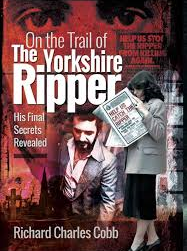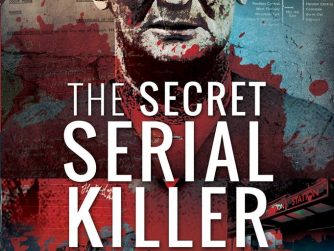
There have been several books written about the crimes of Peter Sutcliffe, and the Yorkshire Ripper murders over the years. Each is well written and a worthy addition to any true crime enthusiast’s bookshelf, and in the opinion of TTCE the canonical three are Michael Bilton’s “Wicked Beyond Belief”; Gordon Burn’s “Somebody’s Husband, Somebody’s Son”; and David Yallop’s “Deliver Us From Evil”. A student of the case will enjoy and learn a great deal from each, as each seems to have a different focus. “Wicked Beyond Belief” offers the reader a factual in depth account of the case and is probably the best overall account of the case published to date. Gordon Burn offers the breathtakingly detailed account of Sutcliffe’s early life and makes for fascinating reading, while David Yallop paints a vivid picture of the areas at the times in which Sutcliffe rampaged for so many years. Any of these is a worthwhile and recommended read, but the focus of this review is a book that concentrates on another, often unmentioned aspect: Did Sutcliffe commit other murders?
Chris Clark is a retired former police Intelligence officer, and together with Tim Tate, himself a former award winning investigative journalist, have in tandem researched and written a quite remarkable book, Yorkshire Ripper: The Secret Murders. Anyone familiar with the Yorkshire Ripper case will know the of the murders and attacks Sutcliffe committed; of the story of the flawed and exhausting manhunt for the “Ripper”, and the various failings that led to Sutcliffe evading capture for so many years – the overwhelming amount of information that detectives received, the lack of coordination and communication between the different police forces involved in the hunt, the absence of a workable and logical filing system ; and the Ripper Squad’s inability to process through it. This is covered here, along with an account of Sutcliffe’s canonical 13 murders. The book also examines the findings of the Byford Report, the internal review of the entire investigation and its failings post Sutcliffe’s arrest, trial and conviction.
Where this book becomes unique and most interesting is that it suggests strongly that Sutcliffe is responsible for many other murders throughout the UK – the book goes so far as to list as many as twenty two. It suggests that Sutcliffe began his killing career a full nine years before his first known murder – the murder of Wilma Mccann in 1975 – and goes on to convincingly suggest that Sutcliffe’s crimes stretch the length and breadth of the UK. Many of the cases featured within this book are celebrated unsolved murders from the annals of British crime – enthusiasts will recognise unsolved cases such as the 1970’s murders of Barbara Mayo and Jackie Ansell-Lamb, and the murders of Eve Stratford and Lynne Wheedon. Also recognisable to enthusiasts are two of the highest profile cases concerning miscarriages of justice of the late 20th century. The 1972 murder of Judith Roberts, which resulted in the wrongful imprisonment for 24 years of mentally subnormal Andrew Evans; and the 1973 “Bakewell Tart” case, in which Stephen Downing was convicted and spent 27 years in prison for a crime he did not commit. The other crimes covered in this book will not be as familiar; they are not very well publicised and TTCE found this appealing: it is always rewarding to learn about new cold cases, those not familiar to the public often make for the most interesting research. It has long been suspected that Sutcliffe at least attacked many more women than he was convicted of attacking – indeed; Sutcliffe himself has begrudgingly admitted a number. This book accounts a list of several attacks on women that Sutcliffe is the most likely perpetrator of – and interestingly suggests that Sutcliffe also attacked men, in one case fatally. Perhaps most disturbing to read is the argument presented that the various police force areas of the cases examined here are well aware of Sutcliffe’s guilt, and are participants in a cover up orchestrated by West Yorkshire Police.
TTCE has had a lifelong fascination with the Yorkshire Ripper case, and owns every book written on the subject. So this was a book I was always going to buy anyway, and it did not disappoint. It was refreshing to read a book that instead of recycling the already celebrated accounts of the case in depth, instead presented convincing, well-structured and researched arguments to suggest other murders and assaults that Sutcliffe is suspected of, and his culpability in these. Also appealing are the 12 pages of reproduced photographs which document the victims, and crime scenes mentioned. I am sure I am not alone when I say that, in my opinion, the more photographs included always betters any true crime text. The photographs contained here are of great interest, and are not all readily available by online search.
My one criticism with the book, and it has to be said that it is a slight, is that in places I found the authors to be over critical about the failings of various police forces to communicate with each other. The Ripper investigation’s failings are already well documented, and it is easy in the age nowadays of technological advancement, databases and instant communication to say that the police could have or should have done this and looked at that etc, hindsight is a wonderful thing. It should be remembered that although it is universally accepted as being a seriously flawed investigation, it was the biggest investigation of its kind at the time and evidentially produced more of a paper trail than was realistically possible to process. But what else could police do at the time?
However, this is a small slight and as with TTCE’s other reviews, more of a personal opinion. Overall, any reader will not be disappointed with Yorkshire Ripper: The Secret Murders. It is well written, fascinating, and would be a fitting tribute to the book if it does stir up any genuine interest in examining the possibility of bringing further criminal charges against Sutcliffe concerning the crimes detailed within. There are countless victims and their families who are still awaiting and deserve the justice. Have a read, and see what you think.
The True Crime Enthusiast.




[…] other crimes committed by Yorkshire Ripper Peter Sutcliffe (Chris’ book is reviewed here) and is very approachable and deeply knowledgeable concerning cold cases. Chris offered the opinion […]
A curate’s egg of a book. Starts off well and with credible evidence of Sutcliffe being the murderer of several unsolved murder cases, but as the book progresses, the evidence is tenuous or even frankly not there. Be wary: I know Chris Clark from his FB site and he is imo far too obsessed with linking all unsolved cases to certain serial killers (he is currently linking Haliwell to unsolved cases where frankly it couldn’t be him, ie Caroline Glashan 1996. His cohort, Tim Tate, was part of the satanic abuse hysteria when we worked for Roger Cook.
I’ve had experience with Chris Clark before, and he blocked me on social media when I’ve challenged him before and disagreed about the validity of some of his claims.